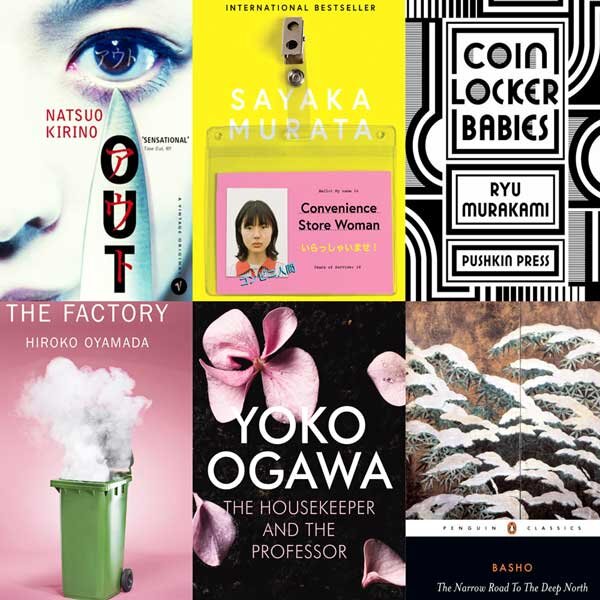Itchiku Kubota Kimono Art: A Japanese Museum Experience Like No Other
by Laura Pollacco | ART
Kimono! The artistry of Itchiku Kubota exhibition, Munson Williams Proctor Art Institute Utica, NY - Universe/Deep Space (宇) by Itchiku Kubota, 1999
Lake Kawaguchiko is famous in Japan and beyond for being one of the most scenic locations to behold the majesty of Mt Fuji. But this is not the only merit the area can claim, as it is also home to a rather special museum that holds the resplendent kimono art of a rather extraordinary man.
Textile design and kimono art hold huge cultural significance in Japan, and the work of Itchiku Kubota is considered the finest example of both. He devoted his life to this craft, and today the Itchiku Kubota Art Museum stands in the workshop he built as testament to his determination and talent.
Who Was Itchiku Kubota?
Itchiku Kubota
Kubota was born in 1917 in Kanda, Tokyo, where, being the son of an antique dealer, he was raised surrounded by art. Growing up in a district filled with dye workshops, he became fascinated with the craft, becoming an apprentice to a kimono designer at 14 years old. Six years later, on a trip to Tokyo National Museum, Kubota saw a fragment of fabric that featured the technique he would spend his life reviving, the tsujigahana dyeing technique. Upon seeing the piece Kubota felt a great depth of emotion, saying “Restraining the pounding of my heart, I gazed intently at that small piece of fabric exuding a subtle and profound atmosphere (…). It carried a quality that was almost plaintive and mysterious. In the hall which was practically devoid of visitors, I continued to look at that small piece of fabric, as if placed under a spell, for over three hours”
Tsujigahana, which literally translates to flower at the crossroads was a textile dyeing technique that was used predominantly during the Muromachi period (1336-1573) but had been lost to time as other techniques became more popular. Some scholars also believe that the laws that banned overt luxury during the Edo period may have included the practice of tsujigahana.
Hijiri by Itchiku Kubota, 1982
Because so little remained in the way of instructions or methods to recreate the original technique, even Kubota could not get it perfect after years of trial and error and so opted instead to reinvent it. Choosing not to overlook the strides made in the field of textile dyeing over the centuries he incorporated modern techniques and materials, calling this new, updated version Itchiku Tsujigahana.
The artist was not able to focus solely on this pursuit though having been called up to fight in WWII where he was captured and sent to a Siberian prisoner-of-war camp. Despite the hardships of his confinement, even here Kubota was able to create art with prison guards requesting sketches of naked ladies from him, which were much valued. After he returned home, aged 31, he worked as a yuzen dye artist for seven years before embarking on his mission to recreate tsujigahana.
He was 60 years old when he finalized his Itchiku Tsujigahana technique. He would then spend the remainder of his life crafting the most stunning kimono, choosing to use multiple kimono as a canvas for his spectacular designs, the most famous being his Symphony of Light collection.
The Itchiku Tsujigahana Kimono Technique
Nagori by Itchiku Kubota, 1980
The original tsujigahana technique remains a mystery, one even Kubota with his many decades of devotion could not crack. Kubota was an artist though, and rather than trying to create an exact copy, decided to add his own understanding of dyeing and textiles to develop something new, Itchiku Tsujigahana.
Using a silk crepe fabric called chirimen as the base, he then used shibori (a form of dyeing) to dye the individual panels of fabric that, when brought together, would create the kimono. He used his knowledge of yuzen dyeing along with more complex resist dyeing and ink painting to create his masterpieces. He also developed a way to make the dye colors more impactful and adhere better to the fabric.
Glycine Imaginaire by Itchiku Kubota, 1970
This technique was extremely complex and took many steps. First, he would stitch the pattern onto the fabric, next the tying, and then the dying. The latter step would require great attention and skill. Each color needed to be dyed separately as different dyes reacted differently to the fabric so it would take a masterful understanding to achieve the multi-tonal final result.
Fugen by Itchiku Kubota, 2004
He would then unthread the stitches to reveal the design, now surrounded in resplendent color, steam and fix the color before the most delicate of work began, drawing on the design in ink. The results are kimono designs that have a depth unmatched by any other, with art critics likening his capture of light to the impressionists of the late nineteenth and early twentieth century.
Kubota’s Symphony of Light
Once he had the technique down, Kubota started working on individual kimono designs but quickly realized he needed to think bigger. He put into motion a plan to create a huge art piece using multiple kimono that, when showcased together, created a massive canvas where his tsujigahana technique could be fully appreciated.
Benigara by Itchiku Kubota, 1984
Kubota was continually in admiration of the natural world around him, particularly in light and the colors it created. The Symphony of Light collection is perhaps his greatest achievement, though sadly one he never saw completed, as he had planned for 80 kimono in total yet had only 34 upon his death, and another two added posthumously. The collection would comprise two themes, The Four Seasons and The Universe.
Baku by Itchiku Kubota, 1995
The Four Seasons gowns he created consist only of autumn and winter, and when looked at from a distance, so one can see the whole image, a landscape appears going from the golds and reds of autumn to the cold frozen scenes of winter.
The Universe shows off his skill with color, as he depicts vivid patterns and swirls that create a cosmic whirlpool effect. Though they are entitled The Universe, Kubota was inspired by the idea of Mt. Fuji’s core, which in the artist's mind transformed into the crucible of the universe itself. He had intended thirteen designs to be laid out to create the triangular shape of Mt. Fuji, but alas, was never able to finish them.
Throughout all of these, both The Four Seasons and The Universe, he pays homage to the original tsujigahana by interweaving the designs with the technique’s flower motif.
Mt Fuji Collection
Ohn / Fuji and Woodland Covered in Fog by Itchiku Kubota, 1989
Mt Fuji inspired Kubota immensely, so much so that he built his workshop directly in its presence. Kubota is not the first artist to have been entranced by the lone volcano, but his textile interpretations breathed new life into the theme. He created eleven kimono in total for this collection, which can stand together or be viewed alone.
Ohn / An Autumn's View of Mt Fuji from its Northern Foothills by Itchiku Kubota, 1991
Much like the impressionist masters, Kubota sought to capture how the mountain appeared in different lights, showcasing it standing proudly as clouds billow around, or appearing from the seasonal flora and fauna that surround its base. For lovers of Mt Fuji, the sight of Kubota’s work can be quite emotional.
Ocean Collection
Geki by Itchiku Kubota, 2002
Though it was believed that this collection was meant to be a part of the Symphony of Light, Kubota never left any clear instructions as to how they were meant to fit in. Light, as with all his work, is still a clear part of the design as he highlights the different ways the water appears. Sometimes islands emerge from the haze, or, in the case of the kimono titled Geki, we look out from a solid landmass as the sky and sea blur into one.
Unlike his other collections that depict landscapes, there appears to be more freedom within the designs, as there are no borders or edges that tell us where we are. They have taken on the aspect of water that is freedom, creating a soothing and meditative experience.
The Itchiku Kubota Art Museum
Itchiku Kubota
Kubota passed away in 2003, his ambition too great for one lifetime, and his Symphony of Light has been left incomplete. Now the museum he created stands as a way for people to come and witness his skill and determination, and step into the world that Kubota saw.
Located not far out from Tokyo, with easy access by train, you can then walk from Kawaguchiko station to the museum by heading around the lake, all whilst taking in the scenery that inspired the artist so greatly. The museum itself is a work of art, complimenting the nature it resides within rather than trying to overwhelm it. Inside it is home to a permanent collection of the artist's work, whilst other pieces are on loan across the globe to share Kubota’s genius.
If you are interested in visiting or want to learn more about his fascinating life or his techniques, you can visit the website: thekubotacollection.com
Kimono images: © Itchiku Atelier, images courtesy of International Chodiev Foundation
Itchiku Kubota images : © Itchiku Atelier, images courtesy of Ithiku Atelier













ART | October 6, 2023